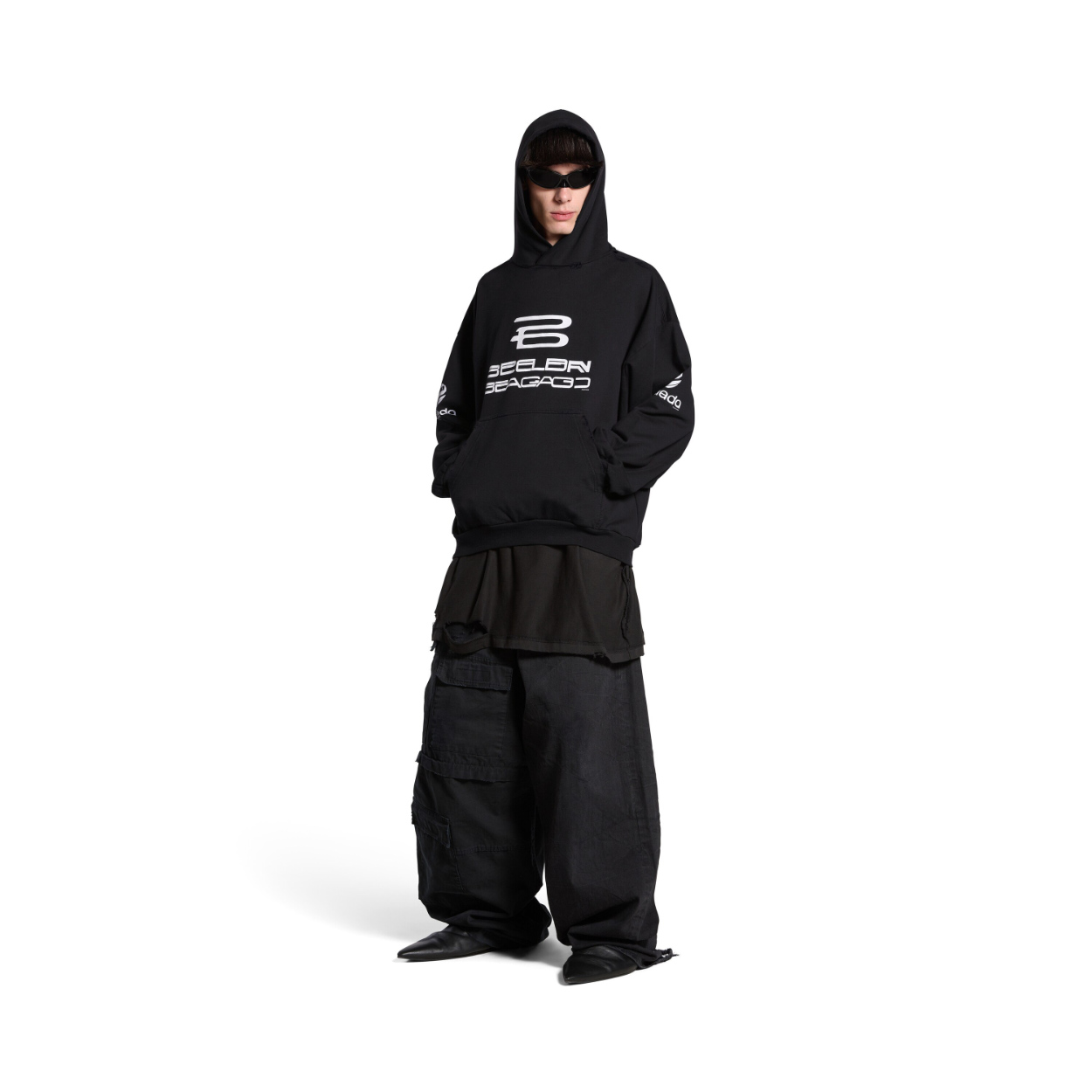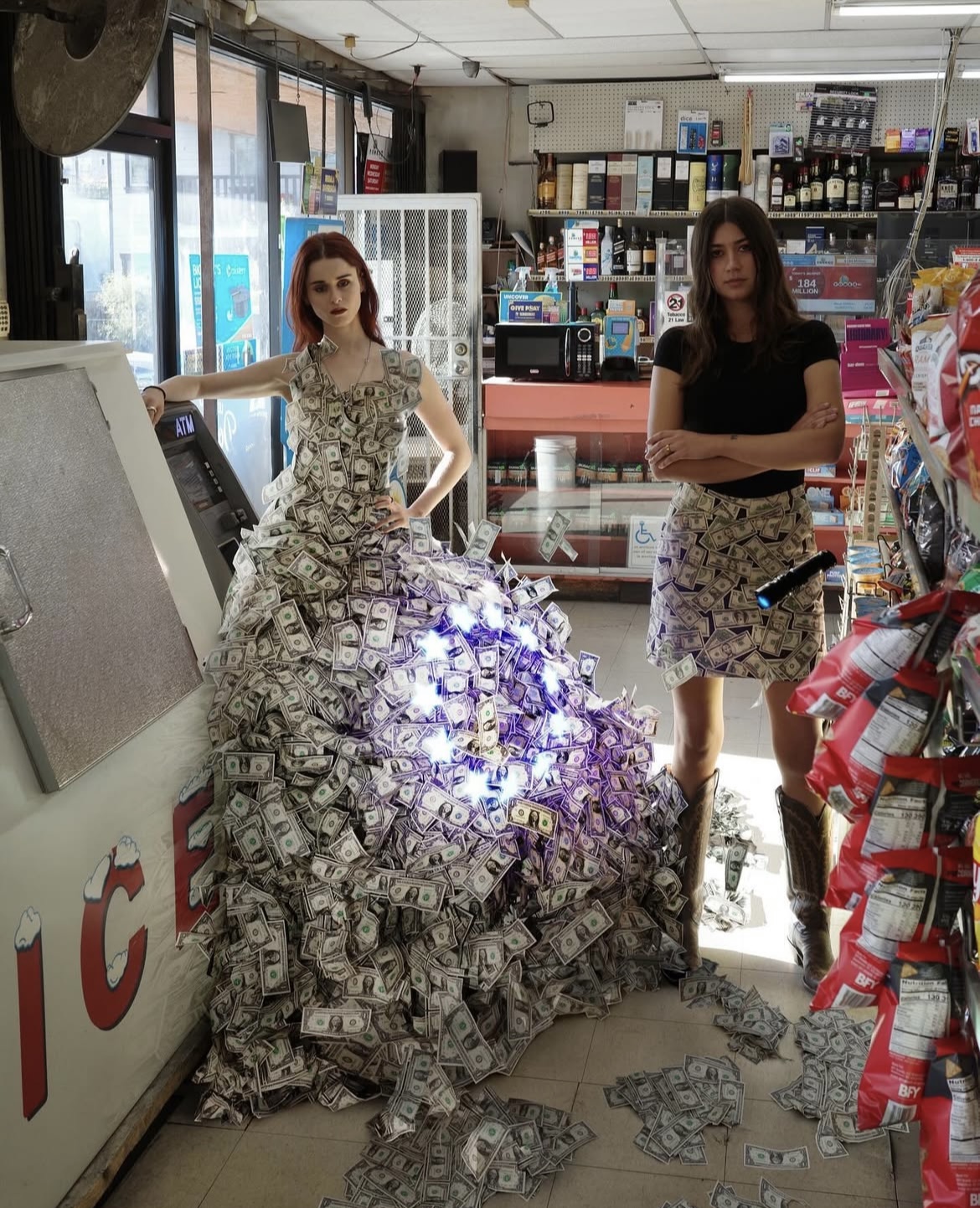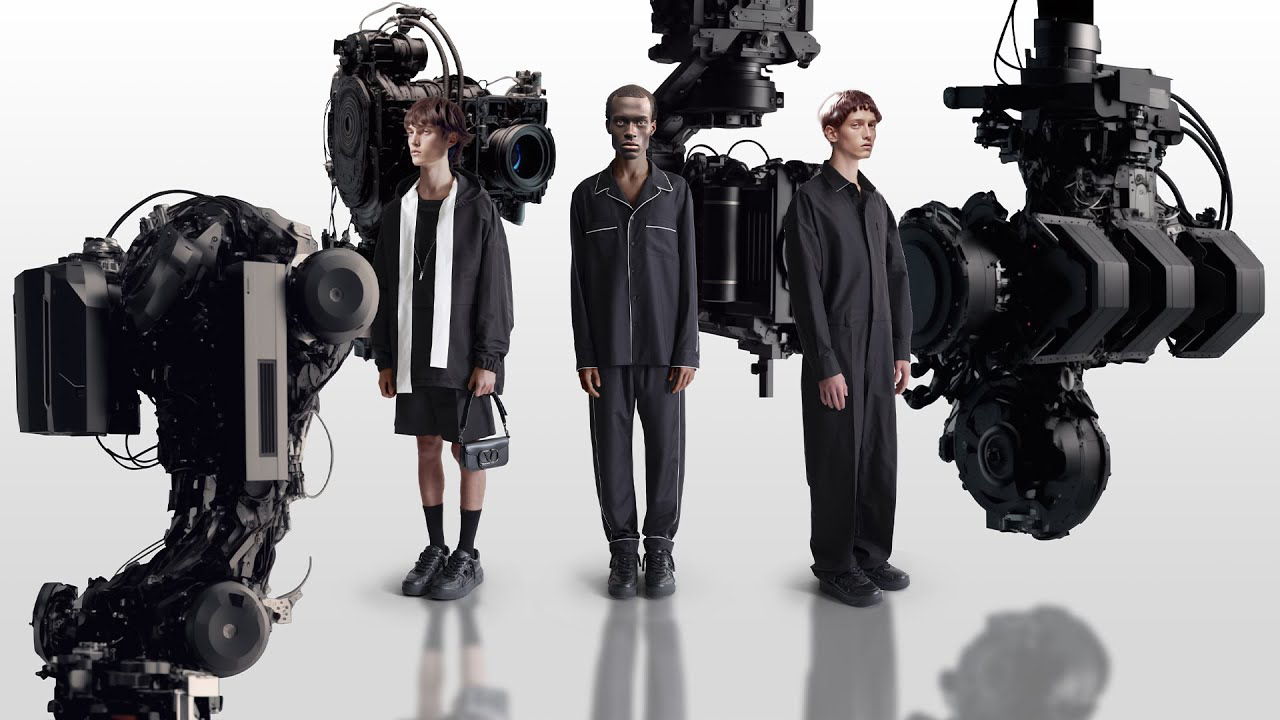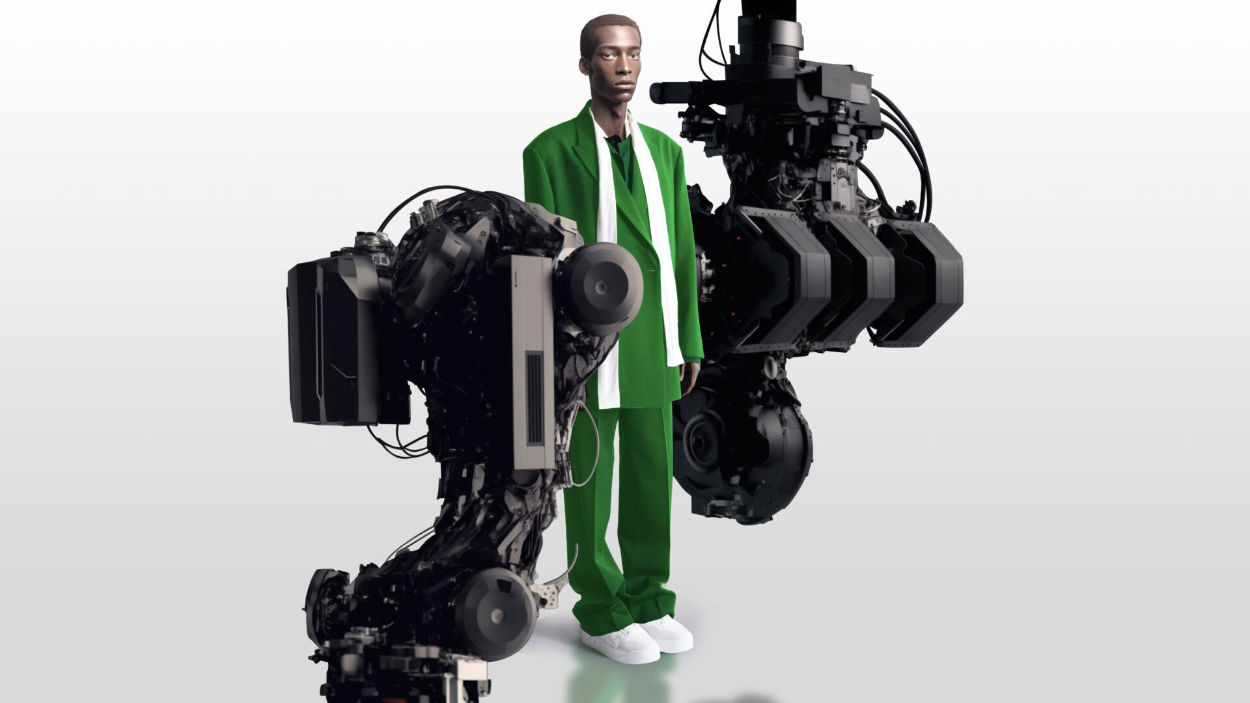This article was originally published in The Interline’s AI Report 2025. To read other opinion pieces, exclusive editorials, and detailed profiles and interviews with key vendors, download the full AI Report 2025 completely free of charge and ungated.
Key Takeaways:
- Some luxury houses are exploring deliberate alternatives to AI-led design, using human imperfection, analogue craft, and slower processes to signal rarity. Others are integrating AI more quietly, applying it to refine operations or enhance storytelling—showing that technology and tradition are not always in tension.
- In the context of widespread generative content, emotional relevance and creative instinct are emerging as new sources of value. The ability to surprise, disrupt, or connect meaningfully is becoming harder to replicate, positioning human authorship as a key differentiator, rather than AI-resistance alone.
- AI is becoming part of luxury’s technical infrastructure, with applications in sourcing, prototyping, grading, and personalisation. Where it complements brand identity and operates in service of craft, it offers a path to innovation without erasing the creative and cultural values that define the category.
With generative algorithms now out-sketching seasoned designers and machine learning models producing entire collections overnight, AI’s acceleration of access, speed, and scale has left the industry bracing for a shift: when anything can be generated at a clip, what still feels rare?
Luxury’s reaction mirrors AI’s growing grip on culture. Industry outliers – like Balenciaga and Coperni – have quickly woven the tech into their creative codes, tapping AI to unlock the next phase of their narrative arc.
But not everyone’s leaning in. Among the old guard, resistance is rising as brands push back against the ubiquity of machine-made design.
Take Prada. For Fall/Winter 2025, the brand staged a quiet revolt, described by Miuccia Prada as “a reaction to the first season of artificial intelligence.” Juxtaposing materials, patterns, and silhouettes served as visual counterpoints to the algorithm-fed digital age, swerving left where data would’ve gone right.
Tod’s has followed a similar path. For Spring/Summer 2025, the leather house debuted a subtle dig at digital dominance with its “Artisanal Intelligence” campaign. Presented at Milan’s PAC museum, the menswear collection spotlighted the hands of its artisans – celebrating masterful stitching, meticulous construction, and the quiet luxury of time-honoured craft.

Cynics might call moves like these savvy branding, or timely counter-narratives to the AI gold rush. But their defiance signals something deeper: heritage houses reasserting the value of human touch, and a recalibration of luxury in the algorithm age.
“I believe we are witnessing the emergence of AI-free luxury as a kind of counter-status symbol,” says Oliver Haus, a freelance creative working with AI and MA Fashion student at the Royal College of Art in London. “In a world increasingly saturated with AI-generated content — where much of what we see, wear, and consume is algorithmically produced — the presence of genuine human input is gaining renewed value. What’s rare becomes desirable, and human time, intention, and imperfection might become the new markers of luxury.”
AI and the Redefinition of Status
If AI can generate couture-calibre garments at scale and speed, what happens to exclusivity? The hallmarks of high fashion – scarcity, craft, and time – risk erosion as generative tools edge closer to mimicking the nuance of the handmade.
The ascent of AI design tools has unleashed a new class of disruptors rewriting luxury’s rulebook. Among them is Draup, the digital fashion platform founded by Daniella Loftus in 2023, now part of Tribute Brand. Draup merges AI-driven design with traditional codes to create couture that “moves at the speed of online culture.” Its generative algorithm determines cut, colour, material, and silhouette. Pieces are currently limited to digital, but real-world applications are fast approaching.
While platforms like Draup broaden access to luxury, this abundance threatens couture’s core tenets of rarity and human imprint. Some foresee a subsequent bifurcation: on one side, efficient, hyper-personalised AI-powered couture; on the other, fashion that embraces slowness and imperfection.
In this paradigm, human-made fashion, flaws and all, may not only hold its ground, but gain cachet.
“As AI learns from existing digital data,” Haus says, “the most distinctive work may start to come from sources that are not online — archives, vintage publications, memories, hand-written notes, personal encounters. The creative who takes the time to source from these places could offer something truly unique. But this comes at a cost: time, dedication, effort. And so luxury may begin to reflect not just material rarity, but also the rarity of deep personal research and analogue process.”

It raises a pressing question: will consumers start paying more for fashion that’s explicitly non-AI?
Anne-Liese Prem, an emerging tech trendscout and Head of Cultural Insights & Trends at digital agency Loop isn’t convinced. “Probably not automatically,” she says. “‘Non-AI’ isn’t enough on its own to command a premium. High-end consumers aren’t nostalgic. They’re not necessarily sitting around craving handmade jackets just because they hate AI. Non-AI will matter, but only if it’s connected to a creative idea that stands apart from what AI can easily fake .What will command a premium is creative originality and emotional relevance, not the fact that it’s human-made by default.”
Product alone also no longer cuts it, argues Haus. “We already have the tools to produce almost anything, almost instantly. So what becomes rare – and therefore valuable – is not the object itself, but the world around it. The experience. The materiality. The narrative of where something comes from, how it was made, and who made it. Luxury may evolve into something less about possession and more about immersion: the feeling, the ethics, the care behind the thing.”
AI’s Environmental Impact: A Complicated Story
AI’s impact extends beyond aesthetics and value. While proponents have pitched it as a fix for luxury’s sustainability issues, the truth is much more nuanced.
Tech advocates frame AI as an antidote to inefficient production and overstock. But whether AI’s environmental cost outweighs that of traditional luxury remains unclear – especially as legacy houses face scrutiny over fast-fashion parallels and supply chain ethics.
Still, when used strategically, AI may offer sustainability gains. From streamlining supply chains and minimizing physical prototypes to forecasting demand and improving logistics, AI can enhance operations without compromising craft.
Yet some industry voices remain sceptical. “AI optimizes for speed, which is the antithesis of craftsmanship,” says Brede Rørstad, co-founder of creative studio No More Mondays and fashion print platform Fiol. “Craftsmanship and true quality is slow by nature. The idea that AI will solve fashion’s environmental issues is also misleading. AI doesn’t change the amount of fabric needed for a garment. Only buying less, and buying better, can lower our footprint, and I don’t see how AI addresses that.”
A Potential Divide?
Could AI-driven fashion carve out its own lane? Some suggest the future won’t be a clean break, but a dual-track evolution.
“The difference lies in intent,” says Haus. “Those who synthesise AI with their own research, intuition, and handcraft may unlock new levels of innovation. But those who lean too heavily on what AI already knows risk producing work that is derivative, or even predictable.”

Rørstad agrees. “Just like designers moved from pencil and paper to Photoshop, Illustrator, and CAD, consumers today won’t really care how designers create, as long as the work resonates,” he says. “AI is simply another tool. It’s still the designer – the human – who creates. However, if the work becomes AI-centric or is used too literally, it could easily backfire.”
While splashy AI campaigns like Valentino’s ‘Maison Valentino Essentials’ and Moncler’s 2023 collaboration with MaisonMeta have slowed, traditional houses haven’t completely abandoned AI – they’re just applying it more discreetly.
It’s a smart move. As tools mature, they offer smarter sourcing and forecasting. Tech and tradition needn’t clash; instead, AI may function as an invisible architect of process.
This quiet integration is especially clear in luxury jewellery. At Tiffany & Co., advanced coding helps craft precise cuts, pushing gemstones to shine brighter. At Boucheron, AI-enhanced 3D printing speeds up design without sacrificing artistry. AI is even refining provenance, with smart grading systems like Sarine’s offering next-level transparency.
Bespoke luxury is evolving, too, with custom couture becoming more accessible thanks to tools like Clo 3D, which allow for digital visualisation before physical creation.
Subtle Innovation, Enduring Values
Navigating this tension between innovation and tradition, brands like Brunello Cucinelli are candid about AI’s potential and its risks, with founder Cucinelli coining AI as “a new handmaiden that accompanies human beings to inspire and renew their genius and creativity.”

That spirit guided the rollout of Solomei AI, the house’s in-house tool and minimalist beta website, which offers visitors a curated archive and an AI-powered chatbot. Soft-touch approaches like these not only avoid customer alienation, but align with luxury’s values of storytelling and timelessness, using AI as a subtle enhancement, not replacement.
But even as the industry moves deeper into an AI-saturated future, the real measure of luxury may not be how fast or flawlessly something can be made, but how deeply it resonates.
As Prem puts it: “The more AI-generated fashion I see, the more certain I become of this: true luxury still comes from human creative genius. AI can replicate style, but it can’t feel the nuance of a cultural moment or disrupt expectations the way a human mind can. In a world of infinite generation, the real scarcity is true creative vision. Brands should guard their instinct like it’s their most valuable currency. Tech is the baseline, but instinct is the real luxury.”
